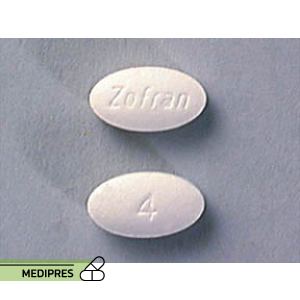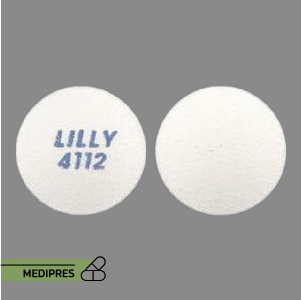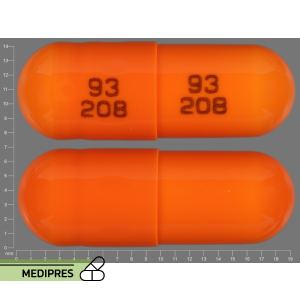
Zipsor
23 June, 2023
Zomig (Zolmitriptan Nasal)
23 June, 2023Zofran injection
Generic name:
Ondansetron
Drug class:
5-HT3 receptor antagonist (Antiemetic)
Dosage form:
- Injection (vial or prefilled syringe)
- Varies by manufacturer: commonly 2 mg/mL solutions
Root of administration:
- Intravenous (IV)
- Intramuscular (IM)
Dose:
- Adults: Typical IV dose 4 mg; may be repeated every 8 hours as needed.
- For chemotherapy-induced nausea and vomiting (CINV):
- IV 8 mg 30 minutes prior to chemotherapy; may repeat 8 mg IV 8 hours later.
- For prevention of postoperative nausea and vomiting (PONV): 4 mg IV immediately before anesthesia induction.
- Pediatrics: 0.1 mg/kg IV every 8 hours (max 4 mg/dose), varies by indication and weight.
- Dose adjustments may apply in hepatic impairment.
- Varies by indication; consult label.
Mechanism of action:
Ondansetron is a selective antagonist of the 5-hydroxytryptamine 3 (5-HT3) receptors located centrally in the chemoreceptor trigger zone (area postrema) and peripherally on vagal nerve terminals in the gastrointestinal tract. By blocking serotonin binding at these receptors, it prevents the initiation of the vomiting reflex.
Drug usage cases:
- Prevention and treatment of chemotherapy-induced nausea and vomiting (CINV)
- Prevention and treatment of radiotherapy-induced nausea and vomiting
- Prevention and treatment of postoperative nausea and vomiting (PONV)
- Off-label: hyperemesis gravidarum (use with caution)
- Varies by indication; consult label.
Drug contra indications:
- Hypersensitivity to ondansetron or any component of the formulation
- Known congenital long QT syndrome
- Concurrent use with apomorphine (risk of severe hypotension and loss of consciousness)
- Varies by indication; consult label.
Side effects:
- Common: headache, constipation, diarrhea, dizziness
- Cardiac: QT interval prolongation, torsades de pointes (rare), arrhythmias
- Hypersensitivity reactions: anaphylaxis, anaphylactoid reactions, bronchospasm, angioedema
- Transient increases in liver enzymes
- Fatigue
- Injection site reactions (pain, irritation)
- Serotonin syndrome (rare, especially with concomitant serotonergic drugs)
- Varies by indication; consult label.
Warnings:
- Monitor for signs of QT prolongation and arrhythmias, especially in patients with electrolyte abnormalities, cardiac disease, bradyarrhythmias, or on other QT-prolonging drugs
- Use caution in patients with hepatic impairment; dose adjustment may be necessary
- May cause serotonin syndrome when used with other serotonergic agents (e.g., SSRIs, SNRIs, MAO inhibitors)
- Hypersensitivity reactions can be severe and require immediate medical attention
- Use caution in patients with electrolyte abnormalities (hypokalemia, hypomagnesemia)
- Not recommended for use with apomorphine due to significant hypotension risk
- Varies by indication; consult label.
Use during pregnancy or breastfeeding:
Ondansetron falls under pregnancy category B in many regulatory agencies, indicating no demonstrated risk in animal studies, but controlled studies in pregnant women are limited. Use should be considered only if the potential benefit justifies the potential risk to the fetus. It is sometimes used off-label for treatment of severe nausea and vomiting in pregnancy (hyperemesis gravidarum), but recent observational studies raise concerns about potential risks of congenital malformations; therefore, use cautiously after thorough risk-benefit assessment.
Ondansetron is excreted in breast milk in low amounts. A decision should be made whether to discontinue breastfeeding or discontinue the drug, considering the importance of the drug to the mother.
Consult current clinical guidelines and healthcare providers for individual risk assessment.



